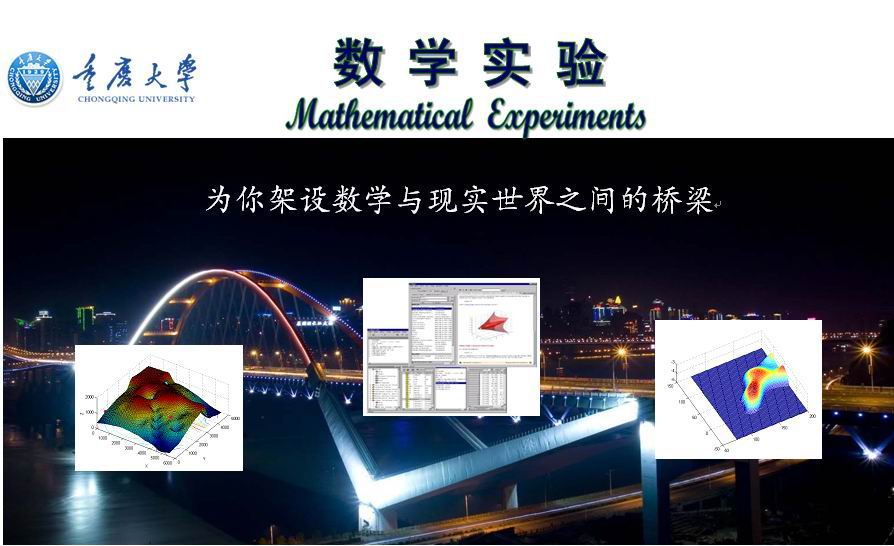
当前课程知识点:Diagnostics in Chinese Medicine > Week 1 Basic Theory of Chinese Medicine 1:Yin-Yang and Five Elements Theory > Frequently Asked Questions > Frequently Asked Questions
返回《Diagnostics in Chinese Medicine》慕课在线视频课程列表
返回《Diagnostics in Chinese Medicine》慕课在线视频列表
老师 我们已经学习了阴阳和五行学说
我们该如何用阴阳 五行学说来理解人体的
正常和不正常呢
阴阳学说 是一个二元论
运用到医学中 当人体阴阳充足平衡的时候
人能耐受冷 也能耐受热
人就比较健康 不容易生病
而当平衡被打破了 就出现阴阳失调
人也就容易生病
表现为阳盛的实热 阴盛的实寒
阳虚的虚寒和阴虚的虚热
治疗疾病的原则就是要恢复平衡
实证要泻 虚证要补
这也就是所谓的
实则泻之 虚则补之
五行学说 是一个多元论
运用到医学中 当五行配五脏平衡的时候
生中有克 克中有生
就会保持人体的动态平衡和协调发展
当五脏失去平衡
就会出现相乘 相侮的病变
治疗疾病的原则也是恢复平衡
太过的 要抑制
不足的 要补充
这就是所谓的 抑强 扶弱
总之 无论阴阳学说 还是五行学说
都体现了中国传统文化中
和谐平衡的精髓
只有和谐的 平衡的 才是正常的
和谐 平衡被打破 就会出现病变
治疗病变的方法
就是恢复和谐平衡
因此 这也提示我们每一个人 应该要
同自然界 同社会和谐相处
对我们的健康是非常有益的
老师 阳盛则实热 阴虚则虚热
都会出现上火的症状
我们怎样去区别呢
阳盛的实火和阴虚的虚火
都是火 也都能够见到火伤津液的
口干 咽干 鼻干 小便黄和大便干等系列症状
最大的区别就是自身体质
阳盛的人 自身的体质比较好
生活习惯也好 爱运动 平时也不会怕热
实热的产生常常是由于外来的因素引起的
比如 天气炎热
或者是过食燥热食物或者是药物等等
阴虚的人 自身体质并不是很好
不良习惯较多
比如喜欢熬夜等等
而且阴虚的人
平时容易出现怕热
五心烦热 潮热 盗汗 身形消瘦等特点
这种阴虚体质的人
即使没有外界因素的影响
平时也十分怕热
如果稍有热气的因素 比如吃了燥热的食物和药物
就会立即有明显的上火症状
老师 我们在跟您门诊的时候
经常会见到一些既有胃胀胃痛
腹胀泄泻
又有失眠多梦 还有烦躁易怒
伴有腰膝酸软的病人
我们该如何运用阴阳 五行理论去分析这个病人呢
这种病人在临床上确实非常常见
分析这种病人
我们需要运用到阴阳和五行学说
首先我们来定位
胃胀 胃痛为胃病
腹胀 泄泻是脾病
失眠多梦是心的病变
烦躁易怒是肝的病变
腰酸背痛是肾的病变
这个病人的病涉及到肝肾
脾胃和心的病变
烦躁易怒是这个疾病的根源
是肝气郁结 肝火旺盛的标志
肝为心之母 因此
肝火容易引动心火
引起心肝火旺 而出现失眠多梦的症状
而肝火日久 会灼伤肾阴
导致肾阴不足的腰膝酸软
肝与脾胃的关系是肝克脾胃
肝气郁结 肝火旺 容易克制脾胃太过
导致肝胃不和而出现胃痛胃胀
或者是肝脾不调而出现腹胀泄泻等等
肾水不足 又不能够抑制心火 也会导致
心火旺盛而出现失眠多梦
总结起来
这个病人 有肝气郁结 心肝火旺
肝胃不和 肝脾不调 肝肾阴虚 心肾不交等证
其中 肝胃心的病变属于实证
脾肾的病变属于虚证
这是一个虚实夹杂证
治疗则要抓住肝气郁结的核心 去泻实补虚
恢复平衡 综合调理 方能痊愈
-Introductory remark
--QQ groups、WeChat public account
-Introduction
--【Discussion 1】Why do you want to take this course?
-Unit test for Introduction
-1.1 Yin-yang theory
-1.2 The theory of five elements
--1.2.1 The theory of five elements
--1.2.2 Application of the theory of five elements
-Frequently Asked Questions
-Unit test for week 1
-2.0 Outline
--【Discussion 2】How to understand the holistic view centered on the Zang Fu theory?
-2.1 Liver
--【Discussion 3】Why is repose more important than vigorous exercise in recuperation for patients with
-2.2 Heart
-2.3 Spleen
-2.4 Lung
--2.4 Lung
-2.5 Kidney
-2.6 Six fu organs
-Frequently Asked Questions
-Unit test for week 2
-3.1 Qi
--3.1 Qi
-3.2 Blood
-3.3 Body fluid
-3.4 The relationship of qi, blood and body fluid
--3.4 The relationship of qi, blood and body fluid
--【Discussion 4】A discussion about the theory of qi, blood and body fluid
-Frequently Asked Questions
-Unit test for week 3
-4.0 Outline
-4.1 Six exogenous factors
--4.1.2 Nature and pathogenicity of wind and cold
--4.1.3 Nature and pathogenicity of summer heat and damp
--4.1.4 Nature and pathogenicity of dryness and fire
-4.2 Etiology of visceral impairment
--4.2 Etiology of visceral impairment
-Frequently Asked Questions
-Unit test for week 4
-5.0 Outline of inquiry
--【Discussion 5】If you were a patient, how would you describe your condition to your doctor first?
-5.1 Inquiry of Chills and fever
--5.1.1 Chills and fever(Aversion to cold with fever)
--5.1.2 Chills and fever(Chills without fever)
--5.1.3 Chills and fever(Fever without chills)
--5.1.4 Chills and fever(Alternative chills and fever)
--【Discussion 6】How to understand "if you have clinical manifestations of cold, that is exterior syndr
-5.2 Inquiry of perspiration
-Frequently Asked Questions
-Unit test for week 5
-5.3 Inquiring of pain
--【Discussion 7】How to understand "stagnation leading to pain and innourish leading to pain"?
-5.4 Inquiring of head, body, thorax and abdomen
--5.4 Inquiring of head, body, thorax and abdomen
-5.5 Inquiring of ears and eyes
--5.5 Inquiring of ears and eyes
-5.6 Inquiring of sleep
-5.7 Inquiring of food and drink, appetite and taste
--5.7 Inquiring of food and drink, appetite and taste
-5.8 Inquiring of defecation and urination
--5.8.1 Inquiring of defecation
--5.8.2 Inquiring of urination
-5.9 Inquiring of infantile and women's disease
--5.9 Inquiring of infantile and women's disease
-Unit test for week 6
-6.0 Outline of Observation
--【Discussion 8】Please use the whole body inspection (including the expression, complexion and figure)
-6.1.1 Observation of vitality
--6.1.1 Observation of vitality
-6.1.2 Observation of the color
--6.1.2.1 The content, principles of inspection of the color
--6.1.2.2 Indication of diseases by five colors
--【Discussion 9】How do you understand the normal complexion of a normal people?
-6.1.3 Observation of the appearance
--6.1.3 Observation of the appearance
-6.1.4 Observation of figure and posture
--6.1.4 Observation of figure and posture
-Unit test for week 7
-6.2.1 Observation of head and face
--6.2.1 Observation of head and face
-6.2.2 Observation of five sensory organs
--6.2.2.1Observation of five sensory organs(observation of eyes,ears,nose)
--6.2.2.2Observation of five sensory organs(observation of lips,teeth and gums,throat)
-6.2.3 Observation of body
-6.2.4 Observation of limbs
-6.2.5 Observation of two lower orifices
--6.2.5 Observation of two lower orifices
-6.2.6 Observation of skin
-6.3 Observation of excreta
-6.4 Observation of infantile fingerprints
--6.4 Observation of infantile fingerprints
-Frequently Asked Questions
-Unit test for week 8
-7.1 Outline of tongue inspection
--7.1.1 The morphology and structure of the tongue
--7.1.2 The principle of tongue examination
--7.1.3 The method and precaution of tongue examination
--7.1.4 The content of tongue examination, normal tongue
-7.2 Inspection of tongue structure
--7.2.1 Observe the color of tongue
--7.2.2 Observe the shape of tongue
--7.2.3 Observe the states of tongue
--7.2.4 Observation of sublingual vein
-7.3 Observation of tongue coating
--7.3.1 Observation of coating texture
--7.3.2 Observe the color of coating
-7.4 Clinical significance of tongue diagnosis
--7.4 Clinical significance of tongue diagnosis
--【Discussion 10】Why to observe the tongue can be used to diagnose disease?
-Unit test for week 9
-8.1 The principle of pulse examination
--8.1 The principle of pulse examination
-8.2 The regions and methods of pulse examination
--8.2 The regions and methods of pulse examination
-8.3 The elements of pulse examination and the normal pulse
--8.3 The elements of pulse examination and the normal pulse
-8.4 Characteristics and significance of pulse
--8.4.1 Superficial pulse, deep pulse, slow pulse, rapid pulse
--8.4.2 Surging pulse, thin pulse, long pulse, short pulse
--8.4.3 Feeble pulse, forceful pulse, slippery pulse, uneven
--8.4.4 Taut pulse, tense pulse,soggy pulse, moderate pulse
--8.4.5 Knotted, slow-regular-intermittent, irregularly abrupt
-8.5 Similar pulse, concurrent pulse, pulse indicating deterioration of visceral qi۞
--8.5 Similar pulse, concurrent pulse, pulse indicating deterioration of visceral qi۞
--【Discussion 11】Why is complex pulse more common than single-factor pulse?
-8.6 Women’s pulse, children’s pulse
--8.6 Women’s pulse, children’s pulse
-8.7 The clinical significance of pulse diagnosis
--8.7 The clinical significance of pulse diagnosis
-Unit test for week 10
-9.1 Listening
-9.2.1 Abnormal sound
-9.2.2 Abnormal language
-9.2.3 Respiratory abnormality
--9.2.3 Respiratory abnormality
-9.2.4 Cough
--【Discussion 12】How to observe the patient's cough sound and sputum changes to determine whether the
-9.2.5 Abnormal sounds of the stomach and intestines
--9.2.5 Abnormal sounds of the stomach and intestines
-9.3 Smelling
--【Discussion 13】How to diagnose by smelling?
-Unit test for week 11
-10.1 The method, meaning and precautions of palpation
--10.1 The method, meaning and precautions of palpation
-10.2 Contents of palpation
--10.2.1 Palpating chest and hypochondrium
--10.2.2 Palpating stomach and abdomen
--10.2.4 Palpating hands and feet, palpating acupoints
--【Discussion 14】How to determine whether external or internal injuries?
-Unit test for week 12
-Conclusion
-Final Exam
--Final Exam



